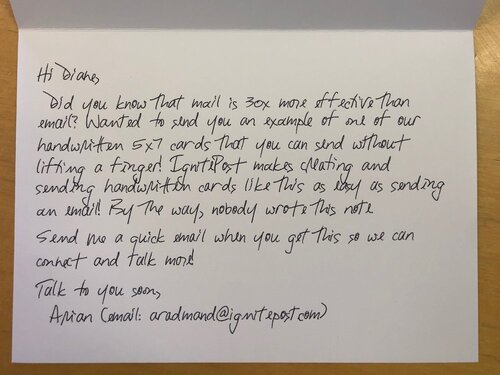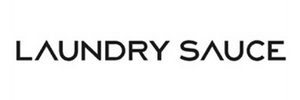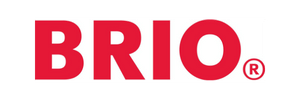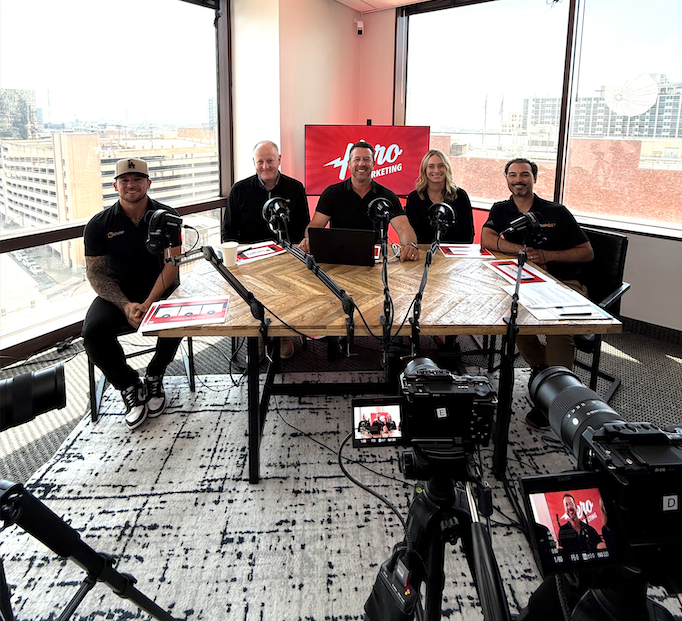Segment, Be Visible, Connect with Passion: How to Crush the Struggles of Marketing
For this 2-part series, we will be highlighting the various challenges that marketers face throughout the sales process, in e-commerce, agencies, and other lines of business, as well as clever solutions and insights that our experts contributed to help educate the market.

Articles surrounding the marketing industry, and business in general, tend to center around tactics, clever strategies and successes. There’s nothing wrong with these. But at IgnitePOST, we want to share both sides of the coin and talk about the struggles of being a marketer. After all, the challenging part takes up the vast majority of all our time.

For this 2-part series, we will be highlighting the various challenges that marketers face throughout the sales process, in e-commerce, agencies, and other lines of business, as well as clever solutions and insights that our experts contributed to help educate the market.
Welcome to Part 1.
SEGMENT: FINDING YOUR IDEAL CUSTOMER
Sam Underwood, VP of Strategy and Operations at Futurety, was recently working with a client who was attempting to scale their online teen apparel store. The client had “extensive industry experience and a solid business plan,” and was working with an amazing agency, yet the business failed.
Why?
Well, it took a bit too long for the client to figure out that their target customers weren’t the teenagers who would wear their clothes, but the parents who’d be buying them. The parents of teenagers they drew to the site were tough to “convert on a product they can only see in a few pictures online, from an unknown retailer,” so conversions immediately became 10 times more difficult. After extensive effort into a fit guide, more models, more photos, and precise data analytics, the client identified their true ideal customers and began running campaigns, but it was too late. Funding ran out before the site could pick up steam.
The client didn’t fully understand their target audience, and they paid for it.
“*Understanding your audience* is the first step to boost your sales.
-Chris LaMorte, Co-founder and Head of Marketing at Web Chimpy

Understand: In any initiative within a company; marketing, sales, or other; you must understand exactly who you are targeting, why you are targeting them, where they reside, and how your target audience may change over time or fall outside your expectations.
To help make this easier, Timothy Robinson--CEO of InVPN--suggests that you “collaborate with organizations that can assist you in identifying and contacting your target market” to ensure you have a second, experienced set of eyes on who you’re targeting.
While you will almost never pick out the right market on your first try, it is important to be vigilant with your testing and quick on your feet. Try marketing to different platforms and slightly different target customers; you never know where you might find hidden demand.
Remember: the most adaptable business always wins.
BOOSTING VISIBILITY
Now that you’ve chosen a strong target market, the next big problem most companies will run into is visibility. How would you expect your products to sell if nobody knows who you are?
The struggle of low visibility, according to our experts, is mainly caused by two things: poor SEO and little to no differentiation from the competition. Let’s dig in.
SEO
For many companies, attempting to scale can feel like trying to break through a brick wall with a paperclip.

But for most of them, the solution lies in plain sight, like a locked door in the wall a few feet away. All they have to do is try something new, and use their paper clips to pick the lock instead of scratching away at the bricks.
Chris LaMorte told us about a time where WebChimpy and an e-commerce client had run into such an issue. The client wanted to boost its sales through a push in digital marketing, but it just wasn’t working out. WebChimpy took a step back and realized it was “facing challenges concerning increasing its [the site’s] visibility” rather than its advertising, so they decided to focus on SEO instead.
Issues like this are common in e-commerce businesses. Andrew Steninmann, a marketing specialist at Inkable Label Co, has noticed how “e-commerce store owners generally think that conducting paid advertising is [all they need to grow]...so they undermine the power of SEO while building their brand identity.” He believes this is a costly mistake, and we wholeheartedly agree.
It’s true that paid ads can deliver a higher ROI in the short-term, but in the long-term, a store needs high-quality content, credible backlinks, and organic engagement--all things that come from good SEO--to truly earn the trust of its customers. Without these ingredients, brands can seem hollow and weak when compared to the strong presence of their competition, and new potential customers will have quite a hard time finding your website if they can’t search for it.
Customers are annoyed by ads; they appreciate and will trust the first results of a google search. Which would you rather be found in?
“It’s unlikely that prospective customers will find the company if it doesn’t appear on the first page of Google’s search results for relevant keywords. Investing in SEO is the only way to solve this obstacle.
-Pranchil Murray, Head of Customer Success at MalwareFox

Optimizing your website for SEO requires that you understand what keywords and subjects to target in order to reach the right people, as well as the intentions behind the people who look up different topics. Targeting the wrong keywords can be a costly mistake.
Darshan Somashekar, Founder and CEO of Solitaired, recommends you “perform extensive short-tail keyword analysis” to ensure your pages are optimized for top search terms, and use long-tail keyword research to “understand the related ‘what,’ ‘how,’ ‘who,’ and ‘where’ inside your niche.” It’s often a struggle for businesses to choose between optimizing for high-competition, broader keywords, or low-competition, highly specific ones. We like that Darshan’s strategy is able to utilize both.
However, he reminds us that “the competition for these keywords [means they] will not generate immediate web traffic as they are just getting started.” SEO is a long, non-linear process; it takes time to build up backlinks and content, so be patient and know that first-page ranking won’t come in week one.
STANDING OUT FROM THE CROWD
It’s hard to be visible to your customers without great SEO or a strong social media presence. It’s even harder to be visible when you have those things, but you appear exactly the same as your competition.

Hence the need for differentiation.
Differentiation starts with who you speak to and how you speak to them. Your product actually comes second--assuming it’s competitive--if you play your cards right.
Understand that in a competitive market, features won’t necessarily make one product stand out from another. Just ask the average person if they can notice the differences in user experience between types of refrigerators, or Windows laptops. Watching the companies’ ads would have you believe that specs make a huge difference, but all people care about is the experience, which usually remains the same across the board.
The real way to stand out is to talk to your market directly and assertively. Address them through their lifestyle and showcase your understanding of their problems. Frame your product as something made for them, and they will listen.
“The greatest strategy to sell to a consumer who is unfamiliar with your product or service is to create content just for them.
-Jennifer Foster, Authority Astrology
Mike Chappell, Founder of FormsPal, notes that any company carrying “a lack of industry awareness and information” will quickly find that they’ve dug themselves into a pit. Their ability to connect with customers is weak, so they have little to work off of to make themselves stand out, not to mention poor knowledge of the competition preventing them from even knowing how they can stand out.
Richard Mews, CEO of Sell With Richard, agrees that understanding your industry and audience is critical to being seen among competitors. He recommends you “get to know your target audience by answering their queries and resolving their concerns,” to get a sense of problems and solutions from the real world rather than predictions alone.

After you get to know your customer, get to know your rivals, and formulate a strategy to make yourself appear different.
“Conduct a detailed review of your rivals on a regular basis. Learn about the goods they market, how they generate leads, and how they communicate with their clients. The next step is to ensure that you stand out – whether it’s by the colors you use, the high-quality features of your website, or an exceptional user interface.
-Amit Raj, Founder of Amit Digital Marketing
Ensure you stand out not through small features and vague numbers, but through how you present yourself and how the user experiences your brand/product -- the two things that will actually set you apart in a customer’s eyes.
CONNECT WITH PASSION: CHOOSING THE RIGHT CHANNELS
Understanding the differences in demographics across the mediums & channels that your company has access to is key to making marketing decisions. Although an email newsletter and a community forum may surround the same company, they are different platforms and could contain two very different audiences.
This was the case when Abby Herman, Director of Strategy at Snap Agency, was working with an artist who wanted to sell a beginners’ art course online. They logically chose her largest channel, social media, to sell through, but nothing could get the courses to sell. As Abby put it, they were forced to “pause the campaign and reassess.”
The agency eventually realized that “a good part of her followers were other artists, while others were art collectors,” so only a slim percentage was within her true target market. This meant that while social media was, on paper, her largest channel, it was actually providing a far lower return than she could achieve by turning elsewhere.
Since Snap understood that “your subscribers list usually has your most loyal fans,” they began selling the courses through email marketing instead. The emails hit home, and the artist’s course sales picked up steam.
For any business owner, it is mandatory that you understand the difference between the different whereabouts of your audience; how desire, budget, perspective, and other things might vary depending on the platform you target.
Data analytics, surveys, test campaigns, and a host of other strategies are all effective ways to spot the difference.

It’s also helpful to understand that the mediums you use may change how well you’re able to communicate with an audience.
Hosea Chang, COO of Hayden Girls, says that while the clothes his company makes are highly in-demand, their product line is “hard to message efficiently through an Instagram or Facebook ad.” It was a struggle for them to convert because even though their product, message, and market were sound, the medium they’d chosen couldn’t live up to their goals.
Since they were “relying way too heavily on that type of advertising” anyways, Hayden Girls decided to take an alternative approach by focusing on “influencer partnerships and organic growth” instead. It wasn’t an extreme change, but it made a world of a difference; the brand has experienced “continued growth” ever since they switched up the medium.
New mediums will change what exactly you can communicate just as much as new platforms will change who you’re communicating with. In either case, it’s smart to be privy to new opportunities as they arise, and be open to trying them out.
“Adopt industry newsletters to ensure you’re getting the latest digital industry trends.
-Shiv Gupta, CEO of Incrementors
You don’t need to go all-in; if a new social media platform springs up out of nowhere, a good username and a post to test the market are all you need. Likewise, if a new medium sparks your interest, all you need is one campaign to gauge how well your customers will receive it.
One campaign is all IgnitePOST’s customers have needed to realize why handwritten notes will do 30x better than an email campaign. Even if they write the same thing for both.

Like Hosea mentioned earlier, certain mediums--especially digital ones--have their limits. You can only communicate so much care through something that is sent to thousands with a click. With handwritten notes, your company’s time and effort is quite literally written into the ink.
Check out our Klaviyo integration here to learn how you can nearly 5x your open rates, without having to change any of your automation tools or write a single word.
CARRYING REASONABLE EXPECTATIONS
Assuming you decide to stick with email, or digital ads, it’s important to carry reasonable expectations into any campaign you launch. Often, store owners struggle not because they aren’t getting good returns, but because they expect impossible ones, so even good numbers will fall short.
Michelle Williamson of Backburner Marketing told us quite an interesting story about a stubborn client who “closed up shop three months after their grand opening.” One of their biggest shortcomings, in the agency’s eyes, was the client’s expectation of “instant results from their social media and inbound marketing”. Cyndi Fifield, CMO of Clicksuasion Labs, dealt with a similarly behaving spa that would “set unrealistic sales goals,” change them constantly, and grow impatient when the targets weren’t hit. This is not an uncommon pattern.
Andrew Steninmann concluded that when the owner hyper-focuses on “an immediate return on their investment,” it is a struggle to keep them happy, while truly helping them grow.
Note that those became two separate things.
The way to deal with this is to understand the difference between a campaign yielding instant and delayed returns on investment. Scam artists can double their money overnight with a good ad and decent website, but it only lasts overnight, and successes are few and far between.
Sustainable businesses, in contrast, require sacrifice and dedication. Great SEO may mean flat or snail-like growth for a year or more, but it all builds up over time, into a strong foundation capable of supporting astounding growth in the future. The difference between businesses that close shop in weeks and businesses that stay open for decades is the amount of short-term sacrifice founders are willing to take in exchange for long-term growth.

There may not always be an easy solution, or a clear path to take. Innovation rarely provides us with these, if ever. But if there were easy, quick, guaranteed high-yield solutions that everyone could access, there would be little need for marketers and no need for agencies.
This is our job as marketers: to innovate, solve problems, and forge our own paths through the challenges of the marketplace.
“There is no one size fits all answer, other than your job as a marketing agency [or any business!] is to be testing, testing and testing. If you aren’t bringing new ideas to the table every week and pushing the envelope - what value are you providing?
-Matt Lally, Founder of TheGiftYak
We hope you’ll join us for Part 2.
Read more insights
-min.png)
Get expert insights for real mail campaigns
Everything you need to launch, run and scale handwritten card mail campaigns. Subscribe today!
































Ready to create your first magic moment?🚀
Start using IgnitePOST today. It's free to signup!
No contracts, no commitment and unbelievable support.
.svg)







.png)